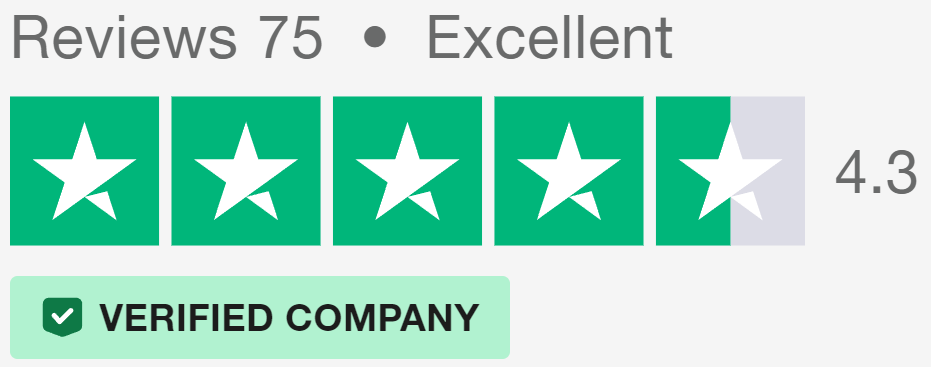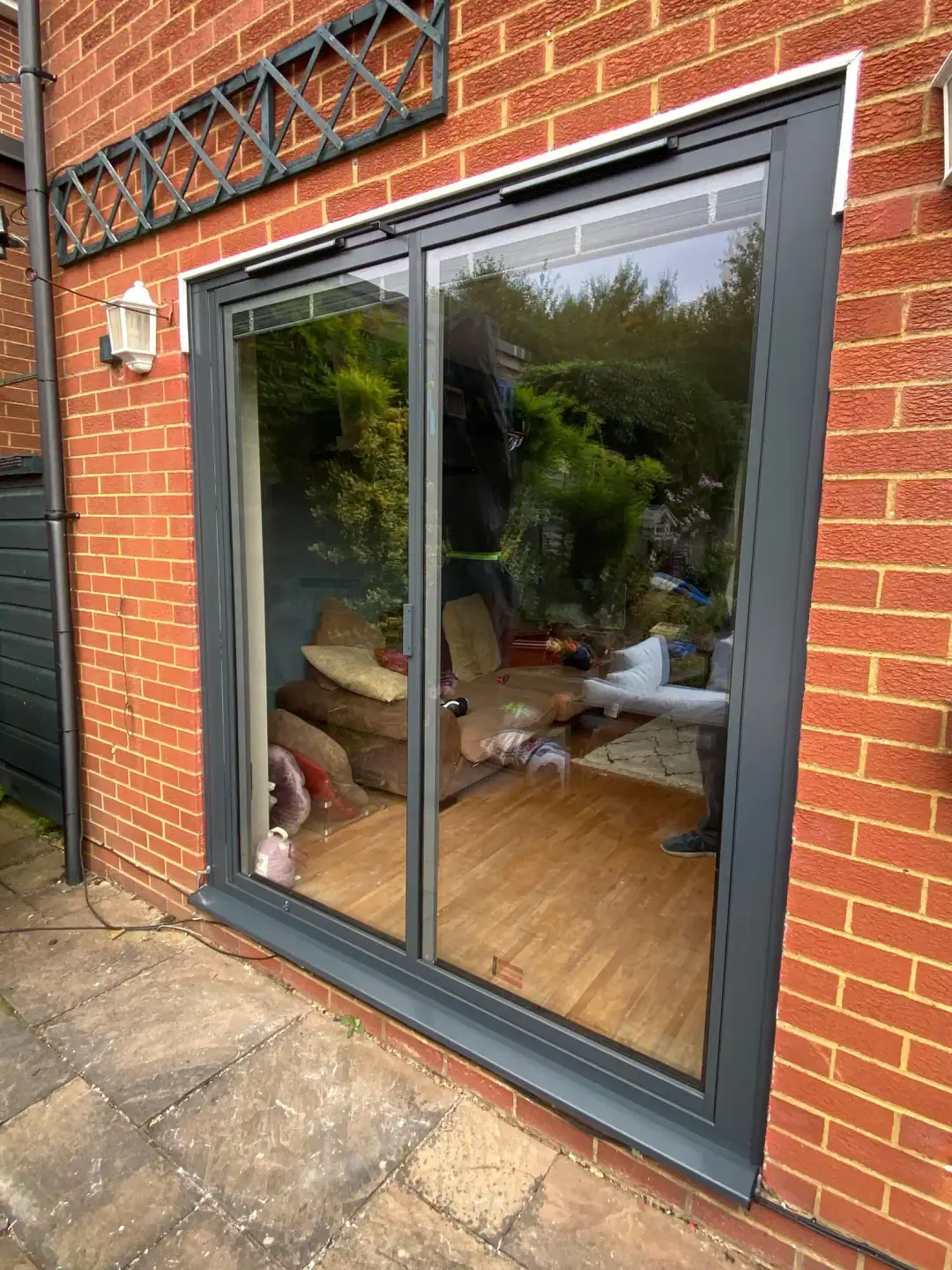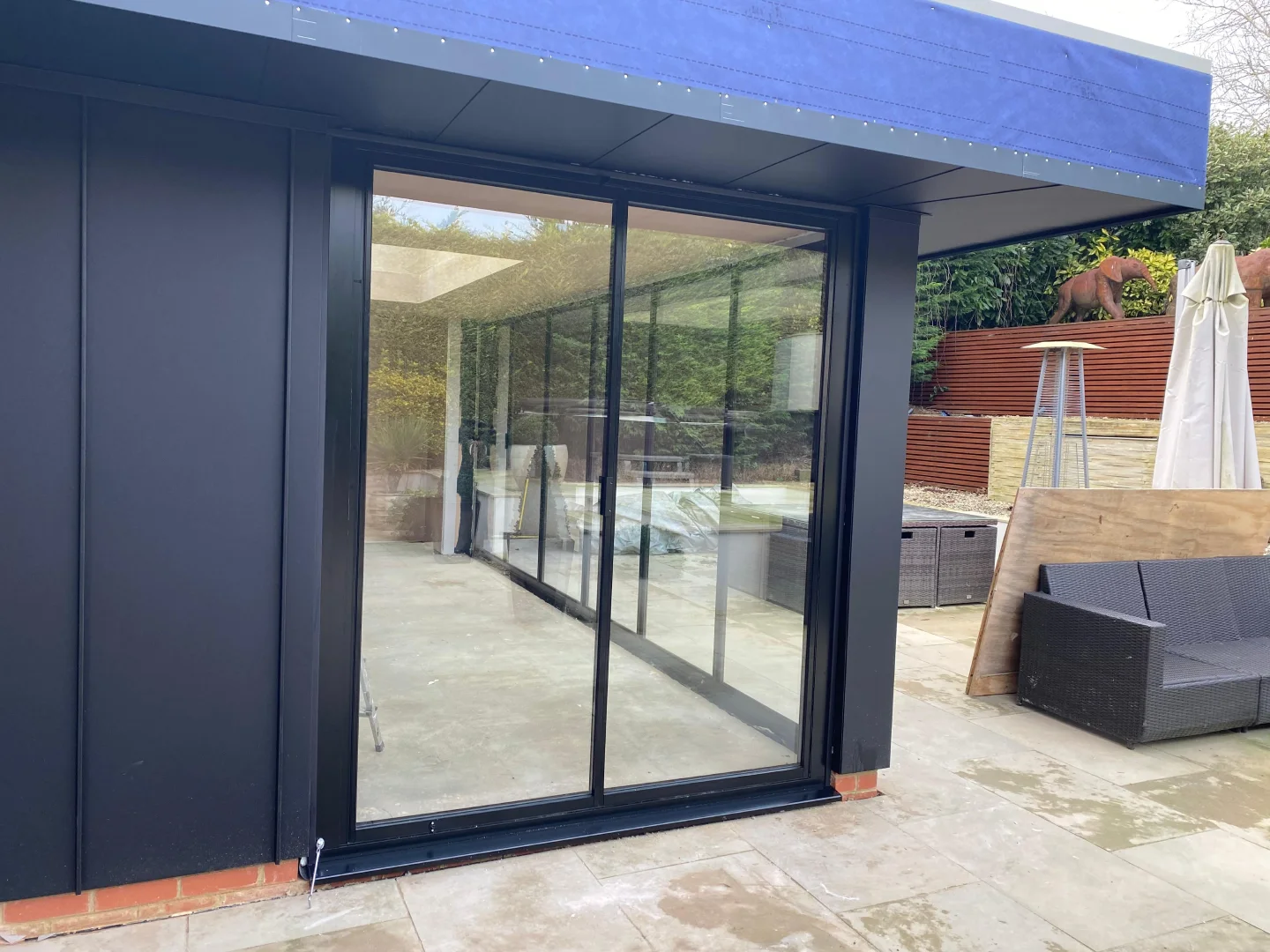Small Patio Doors: Planning, Fitting and Styling Tips
Table of Contents

How to Choose Small Patio Doors for Limited Spaces
Finding the right small patio doors means carefully matching your available space with door styles that work within those constraints.
Comparing Door Types for Tight Spaces
Sliding doors stand out as a practical choice when space comes at a premium. Unlike bifolds that need room to stack, small sliding doors glide parallel to your wall, preserving valuable floor area in compact rooms. Modern style sliding systems now come with ultra-slim frames that look particularly striking in smaller openings.
The way a door moves makes a huge difference in confined areas. Slide and stack systems offer an interesting middle ground – the panels move like sliding doors but can also pivot to open fully, giving you flexibility in how you use your space. These work brilliantly in contemporary spaces where you might want different opening options depending on the season or occasion.

Opening Configurations That Save Space
Outward-opening doors might seem like the obvious choice for small rooms, but they’re not always ideal. Rain can make the panels heavy and awkward to manoeuvre, while strong winds pose risks to the frames. Inward-opening options need careful planning around furniture placement but protect the doors from harsh weather.
Small sliding patio doors bypass these issues entirely. With custom made sliding doors, you can specify exactly how wide each panel should be, ensuring smooth operation even in tight spots. The panels stay protected within your tracking system, regardless of weather conditions.
Panel Size and Glass Options
Glass weight determines how easily your doors will slide. Smaller panels mean lighter glass, which puts less strain on the rolling mechanisms and makes the doors easier to move. Double-glazed units in small patio doors typically perform better over time than larger versions, since they carry less weight on their rollers.
Measuring Tips for Small Openings
Pay special attention to your frame thickness when measuring. The difference between standard and slimline frames can add precious centimetres to your glass area – particularly important in narrow openings where every millimetre counts. Track depths vary between manufacturers, so check whether your chosen system will fit within your floor depth before committing to a purchase.
Small Patio Doors in Period Properties
Fitting modern doors into older buildings requires careful planning to respect architectural features while improving access and light. Many period properties come with quirks and irregular dimensions that make installing small patio doors more complex than in newer homes.
Working with Non-Standard Openings
Original stone or timber lintels often sit at different heights on the inside and outside of walls, creating uneven surfaces that standard door frames won’t fit. Small sliding glass doors need perfectly level tracks to operate smoothly, so addressing these variations early in the planning stage prevents headaches later. Frame packers and adjustable jambs can compensate for some irregularities, but extensive modifications might compromise your property’s character.
Timber-framed buildings pose particular challenges since their structures naturally shift and settle over time. Living space in these properties tends to have more movement than modern constructions, requiring door systems that can handle slight changes in alignment. Installing small patio doors in these scenarios means choosing frames with enough adjustment built into their mechanisms to cope with seasonal movement.
Survey Guidelines for Older Properties
Stone mullions and decorative surrounds need especially careful measuring. What appears to be a rectangular opening might have subtle variations that could prevent proper door operation. Measuring at multiple points helps identify these inconsistencies before ordering your doors.
Listed Building Requirements
Grade II listed properties usually allow more flexibility with door choices than Grade I or II/*, though local conservation officers still scrutinise any changes carefully. Small patio doors in listed buildings must complement existing architectural elements – aluminium frames painted in heritage colours often win approval where modern metallic finishes might not.
Traditional styles remain popular in listed properties, but conservation officers increasingly accept contemporary door designs when they’re well-matched to the building’s character. The key lies in choosing profiles that echo original glazing patterns while providing modern performance. Slim-framed doors often work well since they mirror the delicate glazing bars found in period windows.
Many conservation areas have specific rules about glass reflectivity and frame materials. Small sliding doors with special coatings can reduce unwanted reflections while maintaining good thermal performance. Some councils require detailed drawings showing how new door frames will line up with existing architectural features.
Dealing with Original Features
Replacing old French doors with small patio doors often reveals hidden challenges. Victorian and Edwardian properties frequently have deep skirtings that clash with modern door tracks. Rather than removing these period features, skilled installers can usually modify tracking systems to work around them.
Stone thresholds present another common obstacle in period homes. While modern small patio doors typically need continuous bottom tracks, some manufacturers offer systems with discrete guidance mechanisms that preserve original stone steps. These specialised options cost more but help maintain the property’s authenticity.
Bay windows converted to door openings need structural assessment since removing the original sill alters how weight distributes through the wall. Steel supports can reinforce these openings invisibly, allowing small patio doors to fit while maintaining the building’s structural integrity.
Meeting Modern Standards
Period properties often have single-glazed windows, making the jump to modern double-glazed small patio doors quite dramatic. The improved insulation can change how your room behaves – better draught control might mean adjusting your heating habits or adding extra ventilation to prevent condensation.
Original floor levels rarely match modern requirements for weather protection. Building up the external threshold helps prevent water ingress but might require internal steps or ramps. Some manufacturers design their small patio doors with integrated drainage channels that reduce the need for raised thresholds.
Small Patio Doors for Urban Homes
City living demands smart choices about door placement and operation to protect your privacy while maintaining natural light levels. Small flats and terraced houses often lack garden screening, making privacy a particular concern with glass doors.

Privacy Solutions That Don’t Block Light
Many homeowners overlook frosted glass options when choosing small patio doors, defaulting to curtains or blinds. Modern glass treatments provide privacy without darkening your space – acid-etched patterns and sandblasted finishes let light through while obscuring views. Gradient patterns work especially well, providing full privacy at eye level while keeping clear glass above and below.
Tiled floors near minimal sliding doors need careful planning to maintain privacy. Floor-level lighting can create reflective surfaces at night, making your interior visible from outside. Setting your base track slightly proud of the floor reduces these unwanted reflections while still allowing smooth operation.
Privacy film offers a removable option for small sliding doors, letting you adjust the level of screening as neighbouring properties change hands or seasonal plants grow. Some films even switch from clear to opaque with an electrical current, though these cost substantially more than standard options.
Glass Specifications for Privacy
Low-iron glass improves clarity but might expose more of your interior to outside view. Standard float glass has a natural green tinge that slightly reduces visibility while maintaining good light transmission. Anti-reflective coatings cut mirror effects at night but work best when paired with careful interior lighting design.
Balcony Door Options
Sliding doors leading to balconies need different privacy approaches than ground-floor installations. Upper-floor positions often mean less concern about passersby looking in, but overlooking from neighbouring buildings becomes more important. Small patio doors with integrated blinds between the glass panels offer a neat solution, keeping dust-free privacy control within the glazing itself.
Balcony regulations sometimes restrict door opening patterns. Small patio doors that slide rather than swing avoid issues with emergency exit routes and prevent panels hanging over balcony edges. Some councils specify maximum opening sizes for safety, making multi-panel configurations more practical than single large doors.
Security in Built-Up Areas
Multi-point locking systems deter intruders, but their position matters more on small patio doors than larger versions. Locks placed too close together reduce security effectiveness, so door manufacturers often modify their standard lock spacing for narrower panels. Anti-lift blocks prevent criminals from removing sliding panels, while reinforced glass adds another security layer without compromising light levels.
Ground-floor installations in urban areas benefit from additional security measures. Break-glass sensors and door contact alarms integrate well with small sliding doors, particularly models designed for city homes. Internal beading prevents glazing removal from outside, while laminated glass stays in place even if broken.
Managing Noise and Air Quality
Double-track systems allow small patio doors to include fly screens without extra frame bulk. These prove invaluable in urban settings where insects become more common due to light pollution and warmer microclimate. Acoustic glass helps reduce traffic noise – particularly important when replacing older doors that might have provided some sound dampening through their poor fit.
Air pollution concerns mean many city homeowners hesitate to open their doors fully. Small patio doors with night vent positions allow secure ventilation through limited openings. Some systems incorporate air filters in their ventilation slots, reducing particulate pollution while maintaining airflow.
City gardens often feature high walls or neighbouring buildings that limit airflow. Choosing the right glass specification for small patio doors helps prevent condensation in these sheltered spots. Low-E coatings maintain good internal temperatures while reducing condensation risk, particularly important in small urban spaces where air circulation might be limited.
Designing Around Small Patio Doors
Room layouts need careful thought when installing glass doors in compact spaces. Where you place furniture shapes how you use your doors – and vice versa.
Room Layout and Furniture Placement
Heavy sofas and armchairs placed near small patio doors can make them awkward to access. Instead, lighter pieces like side tables or occasional chairs work better near door panels, since you can move them easily when opening the doors fully. L-shaped seating arrangements help define separate zones while keeping clear access to the doors.
Dining tables near slimline patio doors need space for chairs to be pulled out without hitting the glass. A good rule is to leave extra room beyond what you’d normally allow – sliding panels move differently from hinged doors, so standard spacing guidelines might not work. Round tables often fit better than rectangular ones, giving more flexible seating arrangements in tight spots.
Storage units require special attention when positioned near door tracks. Built-in cabinets should stop short of the door frame to prevent moisture transfer through the walls. Freestanding pieces need enough clearance to allow air circulation, preventing mould growth behind them.
Curtains and Blinds
Wave-style curtains suit small sliding doors particularly well, since their curved profile takes up less space than traditional pleated designs. Fitting tracks close to the ceiling rather than just above the door frame makes the room feel taller while hiding the door head section.
Roller blinds mounted inside the door reveal keep clean lines but can make the glass panels harder to clean. Outside-mounted cassettes protect the blind mechanism from dust but need deeper window reveals to look neat. Some small patio doors come with pre-fitted blind systems that integrate into the frame itself.
Creating Statement Looks
Black frames on small patio doors create striking garden views – similar to picture frames around artwork. The contrast draws attention outward, making compact rooms feel more spacious. Dark frames work especially well with laminated glass, which has a clearer edge appearance than standard double glazing.
Industrial-style doors don’t always need large openings to make an impact. Small-format steel-look frames divide the glass into smaller panes, adding character without overwhelming modest spaces. These designs particularly suit urban properties where original industrial features have been lost.
Hardware Selection
Door handles make a surprising difference to the overall look of small patio doors. Minimal handles in matching frame colours almost disappear, while statement pieces in contrasting finishes become feature points. Level handles tend to work better than projecting ones in tight spaces, reducing the risk of catching clothes or furniture.
Using Colour Effectively
Frame colours influence how noticeable small patio doors appear in your room. Matching frames to wall colours helps them blend away, while contrasting shades turn them into focal points. Metallic finishes reflect light differently throughout the day, changing how prominent the frames appear.
Grey frames have grown popular because they work with many colour schemes without drawing attention away from the view. Dusty pinks and sage greens offer subtler alternatives to stark black frames, particularly in period properties where harsh contrasts might look out of place.
Powder-coated finishes in muted tones often improve how small patio doors look in compact spaces. Bright white frames can appear too stark in smaller rooms, while wood-effect finishes might overwhelm the space with texture. Mid-tones generally prove more forgiving, helping balance the proportion of frame to glass.
Paint colours near your doors need careful selection to avoid reflections in the glass. Very dark walls can create mirror effects at night, while bright colours might reflect onto the glass and change how you see the garden. Testing paint samples at different times of day helps prevent unwanted reflections.
Light and Views Through Small Patio Doors
The way light moves through your glass doors changes not just how bright your room feels, but how you experience your outdoor space throughout the day.

Frame Choices for Better Visibility
Ultra-slim sliding doors make a remarkable difference to light levels in compact spaces. Slender frames let in more sunlight than traditional frames while improving your view outward. Three panel sliding doors split the opening into narrower sections, which helps maintain good sight lines even when the doors are partially open.
Modern aluminium profiles push the boundaries of how thin door frames can be while staying strong and secure. Minimal frame sliding doors often use advanced locking systems hidden within their structure, removing the need for chunky handles or visible locks that might interrupt your view.
Multi-point locking mechanisms now fit inside even the thinnest frames, maintaining security without adding bulk. Internal reinforcement allows for incredibly slim visible frame sections – some as thin as a pound coin – while keeping the strength needed for daily use.
Framing Garden Features
Small patio doors work best when they line up with specific garden elements. Positioning your doors to frame a favourite tree or water feature creates a living picture that changes with the seasons. Moving the eye toward these focal points makes modest gardens feel more purposeful and planned.
Frame placement matters more in small openings than large ones. Setting the frame too high might cut off views of nearby planting, while too low could mean missing distant features. The right height depends on your garden’s layout and what you want to see when seated or standing.
Garden lighting needs careful planning when viewed through small sliding doors. Poorly placed lights create reflections on the glass at night, turning your doors into mirrors rather than windows to the garden. Angling outdoor lights away from the glass and using indirect lighting helps maintain clear views after dark.
Glass Types for Light and Privacy
Modern glass manufacturing allows for incredibly clear panes that almost disappear from view. Low-iron glass removes the slight green tinge found in standard glass, making colours appear more vivid through your doors. This clarity proves particularly valuable in small openings where every bit of light matters.
Solar control glass helps balance light and heat in south-facing installations. These specialised coatings let visible light through while blocking excess heat, preventing small rooms from overheating without sacrificing brightness. Different coatings suit different aspects – east-facing doors might need different glass from west-facing ones.
Obscured glass sections can direct views where you want them. Placing clear glass at eye level while using patterned glass above and below maintains privacy without blocking light. This technique works particularly well in urban settings where overlooking neighbours might be an issue.
Managing Seasonal Changes
Summer sun through small patio doors can create intense bright spots in your room. Glass coatings help control this glare without darkening the space year-round. Some coatings work better at certain times of year due to the sun’s changing angle – worth noting when choosing your glass specification.
Winter brings different challenges for small door openings. Condensation forms more readily on smaller glass panes than larger ones because the frame edge – where condensation typically starts – makes up a larger proportion of the total area. Warm-edge spacer bars and special thermal breaks in the frames help reduce this cold-edge effect.
Morning and evening sun angles change how your doors look and perform throughout the year. Low winter sun might reach deeper into your room than summer sun, despite being weaker. Planning furniture around these seasonal patterns helps you make the most of natural light all year round.
Reflections vary with the seasons too. Summer foliage might provide natural screening that disappears in winter, changing how your glass doors look and feel. Strategic planting near the doors can maintain year-round privacy without blocking too much light.
We’d Love to Help You
Vision Glass Doors is a designer, manufacturer, and installer of premium door systems. We are a family run business with over 20 years’ experience and 5,000 installations across the UK.
Our leading range of door systems include Ultra Slim – Slide and Turn Doors, Slimline Sliding Patio Doors and Frameless Glass Doors. Suitable for various internal and external applications, they are applicable to residential and commercial projects.
Click Quick Quote Online for a free quotation within 24 hours. Alternatively, call or email us on 01582 492730 or at info@visionglassdoors.co.uk.

